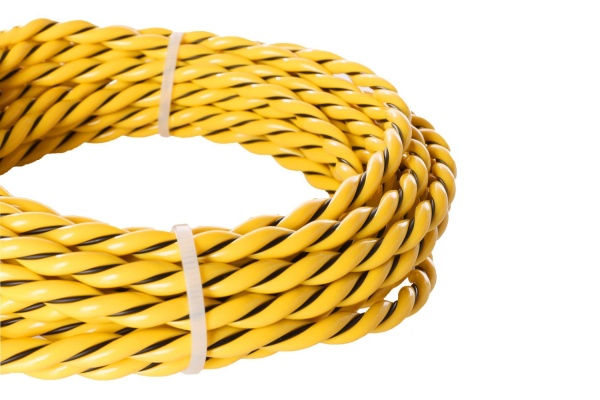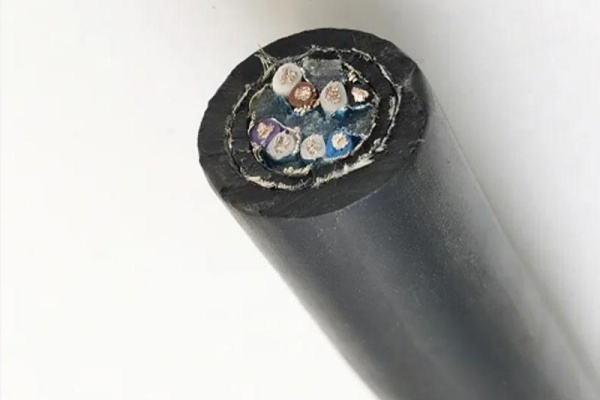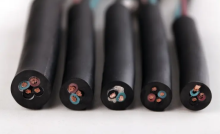Apa itu Kabel Tahan Hidrokarbon? Dalam Aplikasi Apa Mereka Dapat Digunakan?


Kabel Sensing Hidrokarbon-Untuk-Building-Water-Leak-Deteksi
Kabel yang tahan hidrokarbon sangat penting dalam lingkungan yang terpapar berbagai zat hidrokarbon seperti minyak, bahan bakar, dan pelarut. Dirancang untuk menahan efek korosif, Kabel ini memastikan keandalan dan keamanan, Terutama di industri di mana paparan hidrokarbon sering terjadi. Artikel ini akan mengeksplorasi fitur unik kabel yang tahan hidrokarbon, aplikasi utama mereka, Dan mengapa mereka sangat penting di sektor -sektor yang menangani paparan minyak dan kimia.


Memahami resistensi hidrokarbon dalam kabel
Resistensi hidrokarbon dalam kabel mengacu pada kemampuan untuk menahan degradasi saat terpapar hidrokarbon. Hidrokarbon, Senyawa organik terutama terdiri dari atom hidrogen dan karbon, ditemukan di dalam minyak bumi, Gas Alam, dan berbagai bahan kimia industri. Seiring waktu, Senyawa ini dapat merusak bahan kabel standar, menyebabkan hilangnya fleksibilitas, retak, atau kegagalan total.
Untuk memerangi efek ini, Kabel yang tahan hidrokarbon diproduksi dengan bahan yang diformulasikan khusus, seperti polietilen (PE), Fluoropolymer (seperti Teflon), dan poliuretan (Pur), Dirancang untuk menahan penetrasi hidrokarbon. Bahan -bahan ini tidak hanya memberikan ketahanan terhadap minyak dan bahan bakar tetapi juga memastikan bahwa kabel mempertahankan sifat listrik dan mekaniknya di bawah paparan yang berkepanjangan.
Karakteristik utama kabel yang tahan hidrokarbon
Kabel tahan hidrokarbon dirancang untuk menanggung kondisi yang menantang yang tidak dapat ditangani kabel standar. Berikut adalah beberapa karakteristik yang menentukan:
- Resistensi kimia tinggi
Kabel ini secara kimiawi stabil ketika terpapar berbagai zat berbasis hidrokarbon, Mengurangi risiko kerusakan atau erosi seiring waktu. - Daya tahan dan umur panjang
Bahan yang digunakan dalam kabel tahan hidrokarbon dikenal karena daya tahannya. Mereka menahan pakaian fisik dan kimia, membuatnya ideal untuk aplikasi jangka panjang. - Stabilitas termal
Di lingkungan di mana suhu berfluktuasi, Kabel yang tahan hidrokarbon tetap stabil. Ini sangat penting dalam industri seperti ekstraksi minyak, dimana suhu bisa menjadi ekstrem.
4. Resistensi Kebakaran
Beberapa kabel yang tahan hidrokarbon juga tahan api, Menambahkan lapisan keamanan tambahan, khususnya di lingkungan di mana ada risiko kebakaran.
5. Fleksibilitas
Terlepas dari sifat kasar mereka, Kabel ini mempertahankan fleksibilitas, memungkinkan mereka dipasang di ruang sempit atau melintasi tata letak mesin industri yang kompleks.
Standar dan Sertifikasi Manufaktur
Untuk memastikan kualitas dan keamanan, Kabel yang tahan hidrokarbon harus mematuhi standar dan sertifikasi industri. Ini termasuk:
- IEC 60079-14 untuk atmosfer eksplosif
- Iso 14572 Untuk ketahanan kabel terhadap bahan kimia dan bahan bakar
- Standar UL, yang mencakup persyaratan khusus untuk kabel yang terpapar minyak dan hidrokarbon
Standar -standar ini membantu mengkonfirmasi keandalan dan kesesuaian kabel untuk lingkungan yang menantang.
Aplikasi kabel yang tahan hidrokarbon
Kabel yang tahan hidrokarbon memainkan peran penting dalam industri yang beroperasi di lingkungan yang terpapar minyak, gas, dan zat berbasis hidrokarbon lainnya. Berikut adalah beberapa aplikasi utama:
Industri minyak dan gas
Itu minyak dan gas Sektor sangat bergantung pada kabel yang tahan hidrokarbon untuk rig pengeboran, kilang, dan sistem distribusi. Mereka digunakan untuk mengontrol dan menyalakan mesin, memfasilitasi sistem komunikasi, dan mendukung peralatan pemantauan. Kabel ini memastikan kelancaran operasi dengan mengurangi risiko kegagalan kabel, yang dapat mengakibatkan downtime yang mahal.
Pembuatan Kimia
Tanaman kimia menangani berbagai hidrokarbon dalam proses produksinya. Kabel tahan hidrokarbon membantu memastikan koneksi yang aman dan andal di seluruh mesin, Memberikan perlindungan penting terhadap lingkungan korosif.
Aplikasi kelautan dan lepas pantai
Platform dan kapal lepas pantai menghadapi paparan hidrokarbon yang konsisten karena kedekatannya dengan situs ekstraksi minyak. Kabel tahan hidrokarbon yang digunakan dalam lingkungan laut mendukung pencahayaan, distribusi listrik, dan sistem komunikasi data yang penting untuk operasi yang aman dan efisien.
Industri otomotif
Di fasilitas manufaktur dan perbaikan otomotif, Kabel tahan hidrokarbon sangat penting. Mereka digunakan dalam aplikasi seperti sistem pengisian bahan bakar, proses pelumasan, dan distribusi daya di dalam kendaraan, memastikan keamanan dan daya tahan di area yang terpapar bahan bakar.
Sektor pertambangan
Tambang sering memiliki peralatan yang terpapar hidrokarbon dari sistem bahan bakar dan pelumasan. Kabel yang resistan terhadap hidrokarbon memberikan solusi daya dan komunikasi yang andal dalam kondisi yang keras ini, meminimalkan risiko kegagalan peralatan.
Fasilitas industri dan manufaktur
Banyak pengaturan industri menggunakan kabel tahan hidrokarbon untuk mesin yang sering membutuhkan pengolahan dan pelumasan. Kabel memastikan pengoperasian peralatan yang berkelanjutan dengan menahan paparan minyak, yang sebaliknya akan membahayakan kinerja kabel standar.
Kereta Api dan Transportasi Umum
Industri kereta api juga mendapat manfaat dari kabel yang tahan hidrokarbon, terutama di daerah seperti stasiun pengisian bahan bakar, pusat pemeliharaan, dan melatih konstruksi. Kabel ini mendukung sistem listrik, transmisi data, dan pengiriman daya di lingkungan di mana paparan minyak dan bahan bakar adalah umum.
Memilih kabel tahan hidrokarbon yang tepat
Memilih kabel tahan hidrokarbon yang sesuai melibatkan penilaian faktor seperti kondisi lingkungan, bahan kabel, dan persyaratan tegangan. Berikut adalah beberapa langkah untuk membantu dalam memilih kabel yang tepat:
- Menilai paparan hidrokarbon
Tentukan jenis dan konsentrasi hidrokarbon yang ada di lingkungan, Karena beberapa bahan lebih cocok untuk hidrokarbon tertentu. - Pertimbangkan toleransi suhu
Ketahanan suhu sangat penting jika kabel akan digunakan di lingkungan dengan suhu yang ekstrem atau berfluktuasi. - Periksa sertifikasi
Cari kabel yang memenuhi sertifikasi dan standar industri yang relevan, memastikan kesesuaian kabel untuk lingkungan yang dimaksud. - Mengevaluasi persyaratan mekanis
Pilih kabel dengan sifat mekanik yang sesuai, seperti fleksibilitas, kekuatan tarik, dan resistensi abrasi, tergantung pada kebutuhan instalasi.
Pemasangan dan pemeliharaan kabel yang tahan hidrokarbon
Instalasi yang tepat dan pemeliharaan rutin sangat penting untuk memaksimalkan umur dan efektivitas kabel yang tahan hidrokarbon. Beberapa praktik terbaik termasuk:
- Perutean kabel yang tepat: Pastikan kabel dialihkan untuk menghindari pembengkokan atau stres yang tidak perlu.
- Inspeksi Rutin: Periksa kabel untuk keausan atau degradasi, sebagai deteksi dini dapat mencegah masalah yang lebih besar.
- Penggantian yang dijadwalkan: Tergantung pada tingkat paparan dan kondisi kabel, Pertimbangkan penggantian yang dijadwalkan untuk menghindari kegagalan yang tidak terduga.
Kabel yang tahan hidrokarbon sangat diperlukan di sektor-sektor di mana paparan minyak, bahan bakar, dan bahan kimia tidak bisa dihindari. Kemampuan mereka untuk menahan efek korosif hidrokarbon menjadikannya pilihan yang disukai dalam minyak dan gas, kimia, otomotif, dan industri kelautan, antara lain. Dengan memahami aplikasi mereka, standar, dan kebutuhan pemeliharaan, Bisnis dapat memastikan operasi yang aman dan andal di lingkungan yang kaya hidrokarbon.
Recent Posts
Dari tembaga ke serat: Evolusi Kabel
Perkenalan: Itu "Lifeline of Civilization" Across Time and Space In 1858, after five heartbreaking failures,…
Bagaimana cara memahami kabel tiga fase dengan cepat? Favorit di sini!
In the world of industrial and commercial power distribution, three-phase cables play a critical role…
Badai dan banjir! Bagaimana kabel tahan air melindungi daya?
Introduction In recent years, heavy rainfall and flooding have become increasingly frequent worldwide, causing severe…
Peran dan Tantangan Industri Kabel dalam Ekonomi Sirkular
Pendahuluan sebagai keberlanjutan menjadi prioritas global, industries across the spectrum are reevaluating their operations…
Bagaimana Industri Kabel Dapat Memenuhi Tantangan Rantai Pasokan Global?
Rantai pasokan global adalah jaringan yang rumit dan penting yang menghubungkan produsen, distributor, pengecer,…
Dampak Energi Terbarukan terhadap Permintaan Kabel
Introduction The global shift toward renewable energy has become a cornerstone of efforts to combat…

